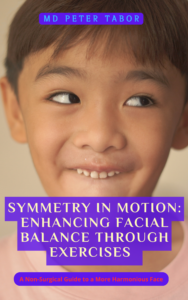—>health.bedscape.com (Main Page) —>Blogposts -Because Your Health is Important
—>Bedscape.com –Become a Warrior in Bed
Take a deep breath. Can you feel the instant relaxation and rejuvenation? Close your eyes for a moment and focus on your breath. Inhale deeply, filling your lungs with fresh air, and exhale slowly, releasing any tension or stress. Notice how this simple act of conscious breathing instantly brings a sense of calm and tranquility. The power of the breath is remarkable, and in this fast-paced world, it offers us a sanctuary of peace.
Conscious breathing, also known as mindful or intentional breathing, involves purposefully directing our attention to the breath and actively engaging in the act of breathing. It goes beyond the automatic process of respiration and taps into the profound connection between our breath, body, and mind. By becoming aware of our breath and consciously controlling it, we can unlock a myriad of benefits for our overall well-being. Breathing is not just a physiological function; it is a bridge that connects the body and mind. Throughout history, various cultures and traditions have recognized the significance of conscious breathing practices for healing and spiritual growth. Today, modern science is uncovering the scientific basis behind these ancient wisdoms, validating the transformative effects of conscious breathing on our health.
In this article, we will explore the transformative effects of conscious breathing practices on health and well-being. From improved physical health to enhanced mental and emotional well-being, conscious breathing has the potential to profoundly impact our lives. We will delve into the science behind conscious breathing, examining how it influences our physiological processes. Furthermore, we will explore the wide range of benefits it offers, both in terms of physical health and mental well-being. Finally, we will provide practical techniques and guidance on incorporating conscious breathing into our daily lives, empowering us to harness the power of our breath for greater health and vitality. So, let us embark on this journey of self-discovery and unlock the secrets of conscious breathing.
Self-Transformation Notebook Pack $19
Unlock your potential with this essential $19 bundle of five life-enhancing guides! Ready to thrive? Start here.
- END YOUR SNORING: Snoring isn’t just noisy—it can signal serious health risks like sleep apnea. Discover how to stop it naturally, without surgery, using quick, daily exercises that clear your airways and restore peaceful sleep.
- MASTER YOUR SLEEP: Poor sleep can sap your energy, fog your mind, and weaken your health over time. Master your sleep naturally—no pills needed—with proven habits and routines that unlock deep, refreshing rest tailored to you.
- THE HIDDEN WORDS WITHIN: Your body harbors unseen universes—trillions of microbes shaping your health, mood, and future. The Hidden Worlds Within reveals how these tiny allies in your gut and mouth can falter, fueling chronic illness and mental strain. With practical steps and fermented food recipes, harness their power—no lab required—to thrive from the inside out.
- SYMMETRY IN MOTION: ENHANCING FACIAL BALANCE THROUGH EXERCISES: Discover the secrets to a more balanced face without surgery—through simple exercises, the viral Mewing technique, and everyday habits that reshape your features over time. This book unveils how your jaw, cheeks, and eyes can find harmony, blending science, practical steps, and real stories to guide you toward subtle, confidence-boosting symmetry.
- ASTRAL AVAKENING: YOUR COMPLETE GIUDE TO OUT OF BODY EXPERIENCES, LUCID DREAMING AND CONSCIOUSNESS EXPLORATION: Unlock the secrets of your consciousness and soar into the astral realm with this transformative guide. From mastering out-of-body experiences to weaving their calm and creativity into your daily life, this book offers a 30-day journey to awaken your spirit and explore the unseen. Ready to lift off?
The Science behind Conscious Breathing
To understand the science behind conscious breathing, let’s first explore the respiratory system and its vital functions. The respiratory system consists of various organs, including the lungs, diaphragm, bronchial tubes, and nasal passages. Its primary function is to facilitate the exchange of oxygen and carbon dioxide between the body and the environment. When we inhale, the diaphragm contracts, and the chest expands, creating negative pressure in the lungs. This negative pressure draws air into the body, filling the lungs with oxygen-rich air. As we exhale, the diaphragm relaxes, and the chest cavity decreases in size, expelling carbon dioxide, which is a waste product of cellular metabolism.
Conscious breathing goes beyond the automatic process of respiration. It involves actively engaging with the breath, which influences both the body and the mind. When we consciously control our breathing patterns, we can regulate our physiological and psychological states. Through conscious breathing, we can stimulate the parasympathetic nervous system, which activates the body’s relaxation response. This leads to a decrease in heart rate, blood pressure, and stress hormone levels. As a result, we experience a state of calm and relaxation. Moreover, conscious breathing increases the supply of oxygen to the body’s tissues and organs. Oxygen plays a crucial role in cellular metabolism, energy production, and overall bodily functions. By optimizing oxygen intake through conscious breathing, we support the efficient functioning of our body’s systems.
The role of oxygen and carbon dioxide in regulating bodily functions.
Oxygen and carbon dioxide are essential gases involved in the regulation of bodily functions. Oxygen is required for cellular respiration, where it participates in the production of energy in the form of adenosine triphosphate (ATP). Adequate oxygen levels are necessary for the optimal functioning of the brain, heart, muscles, and other organs. On the other hand, carbon dioxide is a waste product produced during cellular metabolism. It needs to be effectively removed from the body to maintain a healthy balance. The respiratory system plays a vital role in this process by eliminating excess carbon dioxide during exhalation. Conscious breathing practices can enhance the exchange of oxygen and carbon dioxide. By increasing oxygen intake and facilitating efficient removal of carbon dioxide, we optimize the oxygen-carbon dioxide balance in the body, supporting overall health and well-being.
Introduction to the autonomic nervous system and its connection to conscious breathing.
The autonomic nervous system (ANS) is responsible for regulating various bodily functions that occur involuntarily, including breathing. It consists of two branches: the sympathetic nervous system (SNS) and the parasympathetic nervous system (PNS). The SNS is associated with the body’s stress response, commonly known as the “fight-or-flight” response. It triggers physiological changes to prepare the body for action in response to perceived threats or stressors. In contrast, the PNS promotes the relaxation response, allowing the body to rest, digest, and recover. Conscious breathing practices can influence the ANS by activating the PNS and promoting relaxation. Slow, deep breaths signal to the body that it is safe and can shift it from a state of stress to a state of calm. By consciously engaging with our breath, we can modulate the autonomic nervous system’s activity, fostering balance and well-being.
Understanding the science behind conscious breathing enables us to appreciate its profound impact on our physiological and psychological states. By harnessing the power of our breath, we can optimize our health, promote relaxation, and cultivate a greater sense of well-being.
Benefits of Conscious Breathing
Physical Health Benefits
- Improved oxygenation and circulation. Conscious breathing techniques facilitate deeper and more efficient breathing, allowing a greater intake of oxygen. This increased oxygenation supports cellular function, improves energy production, and enhances overall physical performance. Furthermore, conscious breathing stimulates blood circulation, delivering oxygen and vital nutrients to tissues and organs, promoting their optimal functioning.
- Enhanced immune system functioning. The immune system plays a vital role in protecting the body against infections and diseases. Conscious breathing practices help optimize immune system functioning by reducing stress levels and promoting relaxation. Chronic stress weakens the immune system, making us more susceptible to illness. By activating the relaxation response through conscious breathing, we support immune system resilience and enhance our body’s natural defense mechanisms.
- Reduced inflammation and pain management. Chronic inflammation is associated with various health conditions, including arthritis, cardiovascular disease, and autoimmune disorders. Conscious breathing has been shown to reduce inflammation by modulating the stress response and promoting a state of relaxation. Additionally, conscious breathing can help manage pain by improving oxygen supply to affected areas and promoting relaxation of tense muscles.
- Lowered blood pressure and heart rate. High blood pressure and elevated heart rate are risk factors for cardiovascular disease. Conscious breathing practices, such as deep breathing and diaphragmatic breathing, activate the parasympathetic nervous system and trigger the relaxation response. This leads to a decrease in blood pressure and heart rate, promoting cardiovascular health and reducing the strain on the heart.
Mental and Emotional Health Benefits
- Stress reduction and anxiety management. Conscious breathing is a powerful tool for stress reduction and anxiety management. By activating the relaxation response, conscious breathing helps calm the mind and relax the body. It lowers stress hormone levels, such as cortisol, and promotes a sense of inner peace and tranquility. Regular practice of conscious breathing techniques can significantly reduce chronic stress and anxiety, enhancing overall mental well-being.
- Increased mindfulness and present-moment awareness. Conscious breathing brings our attention to the present moment, anchoring us in the here and now. By focusing on the breath, we cultivate mindfulness and develop the ability to observe our thoughts, emotions, and sensations without judgment. This heightened awareness allows us to better manage stress, improve decision-making, and foster a deeper connection with ourselves and the world around us.
- Improved focus, concentration, and cognitive performance. The breath is intimately connected to our cognitive abilities. Conscious breathing practices increase oxygen supply to the brain, improving cognitive function, focus, and concentration. By directing our attention to the breath, we train our minds to become more present and attentive, enhancing mental clarity, memory, and overall cognitive performance.
- Better sleep quality and relaxation. Difficulty falling asleep or experiencing restless nights can have a significant impact on overall well-being. Conscious breathing techniques promote relaxation and activate the parasympathetic nervous system, facilitating a state of calm conducive to quality sleep. By incorporating conscious breathing into a bedtime routine, we can reduce racing thoughts, quiet the mind, and induce a sense of deep relaxation, leading to better sleep quality.
Techniques and Practices for Conscious Breathing
Diaphragmatic Breathing
Explanation of diaphragmatic breathing and its benefits: Diaphragmatic breathing, also known as belly breathing or deep breathing, involves engaging the diaphragm to achieve a full breath. This technique allows for a deeper inhalation, maximizing oxygen intake and promoting relaxation. Diaphragmatic breathing helps release tension in the chest and shoulders, reduces the shallow breathing often associated with stress, and improves overall lung capacity.
Step-by-step guide on how to practice diaphragmatic breathing: Find a comfortable seated position or lie down on your back. Place one hand on your chest and the other hand on your abdomen. Take a slow, deep breath in through your nose, allowing your abdomen to rise. Focus on filling your lungs from the bottom up. Exhale slowly through your mouth, allowing your abdomen to gently fall. Continue this pattern, inhaling deeply through the nose and exhaling slowly through the mouth. As you breathe, feel the rise and fall of your abdomen under your hand.
Box Breathing
Overview of box breathing and its advantages. Box breathing, also known as square breathing, is a technique that involves equalizing the length of the inhalation, retention, exhalation, and pause. It helps induce a state of relaxation, reduce anxiety, and improve focus and concentration. Box breathing provides a simple and effective tool to regulate the breath and calm the mind.
Instructions on practicing box breathing for relaxation and stress relief: Find a comfortable seated position. Inhale deeply through your nose to a count of four, filling your lungs completely. Hold the breath for a count of four, maintaining a sense of gentle tension. Exhale slowly and evenly through your mouth for a count of four, emptying your lungs. Hold your breath again for a count of four. Repeat this pattern, inhaling, holding, exhaling, and holding for the same count, creating a square shape with your breath.
Alternate Nostril Breathing
Introduction to alternate nostril breathing. Alternate nostril breathing is a balancing breathing technique that helps harmonize the left and right sides of the brain, promoting a sense of calm and mental clarity. It is believed to balance the energy channels in the body and restore a state of equilibrium.
Detailed instructions on how to perform alternate nostril breathing. Sit comfortably with a straight spine. Place your left hand on your left knee, palm facing up, or adopt a mudra (hand gesture) of your choice. With your right hand, bring your index finger and middle finger to rest between your eyebrows. Place your thumb gently on your right nostril and your ring finger on your left nostril. Close your right nostril with your thumb and inhale deeply through your left nostril. Close your left nostril with your ring finger, release your right nostril, and exhale slowly. Inhale through your right nostril, close it with your thumb, and release your left nostril. Exhale slowly. Continue this pattern, alternating the nostrils with each inhale and exhale, focusing on smooth and steady breaths.
Breath Counting
Explanation of breath counting and its purposes. Breath counting is a mindfulness practice that cultivates focus and concentration. It involves counting the breaths to maintain attention and awareness on the present moment. Breath counting helps calm a busy mind, improve concentration, and develop mindfulness.
Step-by-step guide on how to practice breath counting. Find a comfortable seated position or lie down on your back. Close your eyes or soften your gaze, bringing your attention to your breath. Begin by taking a few deep breaths to settle into the practice. As you exhale, silently count “one” in your mind. Inhale deeply, and as you exhale again, count “two.” Continue this pattern, counting each exhale until you reach a count of ten. Once you reach ten, start again from one, allowing the count to cycle naturally. If you lose track or become distracted, gently bring your attention back to the breath and start counting from one again. Practice breath counting for a predetermined duration, such as five or ten minutes, gradually increasing the time as you progress.
Remember, the goal of breath counting is not to achieve a specific count but to maintain awareness of the breath and cultivate mindfulness. If your mind wanders, gently bring your focus back to the breath and resume counting. Over time, this practice can deepen your connection to the present moment and enhance your ability to stay focused and attentive.
Incorporating Conscious Breathing into Daily Life
Creating a conscious breathing routine.
- Set aside dedicated time: Allocate a specific time each day for conscious breathing practice. It could be in the morning upon waking up, during a lunch break, or before bedtime.
- Start with a few minutes: Begin with just a few minutes of conscious breathing and gradually increase the duration as you become more comfortable.
- Find a quiet space: Choose a peaceful environment where you can focus without distractions. It could be a designated meditation corner or a quiet spot in nature.
- Use reminders: Set reminders on your phone or place visual cues around your living space to prompt you to engage in conscious breathing throughout the day.
Integrating conscious breathing into exercise, meditation, and yoga practices.
- Pre-workout or pre-meditation breathing: Prior to engaging in exercise or meditation, take a few moments for conscious breathing to center yourself and prepare your mind and body.
- Mindful movement: Coordinate your breath with physical movements during exercises like yoga, tai chi, or qigong. Sync your inhales and exhales with specific postures or movements to enhance the mind-body connection.
- Breath awareness during cardio exercises: During cardiovascular workouts, maintain awareness of your breath. Focus on deep, steady breathing to improve oxygenation and enhance endurance.
Using conscious breathing techniques in stressful situations.
- Take a pause: When faced with a stressful situation, pause for a moment and bring your attention to your breath. Slow down your breathing and consciously take a few deep breaths to activate the relaxation response.
- Grounding breaths: In moments of stress or overwhelm, practice diaphragmatic breathing or box breathing to anchor yourself in the present moment and restore a sense of calm.
- Breath release: When feeling tension or anxiety, take a deep breath in and exhale with a sigh or audible sound, allowing yourself to release stress and tension with each breath.
Exploring mindfulness and breath awareness in everyday activities.
- Mindful eating: Before each meal, take a moment to engage in a few conscious breaths. Throughout the meal, savor each bite and pay attention to the sensations, flavors, and textures.
- Commute or waiting time: Utilize your daily commute or moments of waiting as an opportunity for conscious breathing. Focus on your breath instead of becoming lost in distractions or impatience.
- Work breaks: Incorporate short conscious breathing breaks into your workday. Step away from your desk, find a quiet space, and engage in a few minutes of mindful breathing to recharge and refocus.
By consciously integrating breathing practices into various aspects of daily life, you can harness the benefits of conscious breathing throughout the day. Whether through dedicated routines, physical activities, stress management, or mindful awareness, incorporating conscious breathing becomes a transformative and empowering habit.




